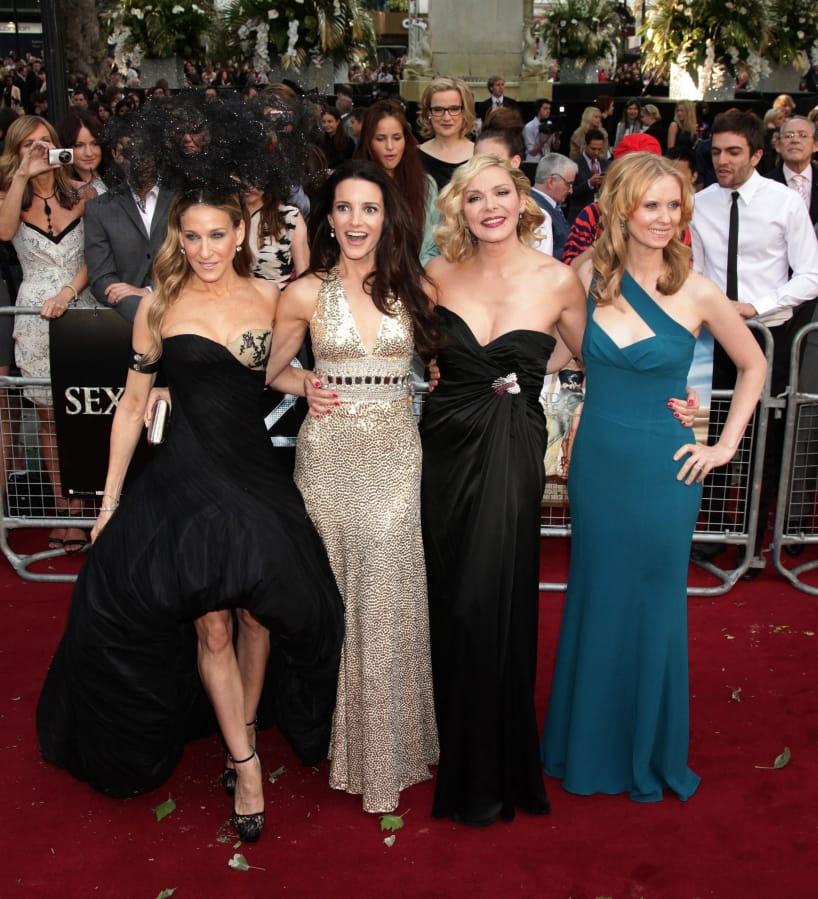When “Sex and the City” arrived on HBO in June 1998, sopranos were still singers with high voices, Larry David was the guy who wrote “Seinfeld,” and “Six Feet Under,” “Deadwood” and “The Wire” were years from being credited with starting a revolution of original cable series programming.
Carrie (Sarah Jessica Parker), Samantha (Kim Cattrall), Charlotte (Kristin Davis) and Miranda (Cynthia Nixon) ushered in change on $900 Jimmy Choo stilettos, loosening up TV conventions as they swilled martinis in designer dresses.
Free of the constraints of network television, they cursed like R-rated film heroes, discussed sex in graphic detail, had lots of graphic sex and strived to be fabulous rather than likable.
“It’s slim pickings out there,” said Samantha during one of many episodes where the women were lamenting their dating prospects. “You can’t swing a Fendi purse without knocking over five losers.”
It was the cynicism of Gen X, coupled with a sexual awakening post-AIDS crisis, in an era when the city was moving up from grungy to moneyed. “Sex and the City” became must-watch Sunday night viewing for young(ish) women, gay men and anyone else who finally saw their embarrassing drunken confessionals with friends, and disastrous/scandalous dating moments, dramatized on screen. Each episode walked the line between fantasy and reality, sentimentality and raunch, and dressed it all to the nines.
But the show wasn’t meant to represent the real lives of city women. It was there to entertain those who hadn’t been represented. “Sex and the City” has since been maligned for being unrealistic, for being too white and for setting feminism back with vain characters obsessed with shopping and sex.
But Carrie and company weren’t meant to carry the feminist mantle from “Murphy Brown” to “Girls.” They simply leveled the playing field. They were the primary focus, and male characters were peripheral. It was their conversations we finally got to hear, not men talking about them.
Successful TV series with female-driven narratives were rare back then. The “Sex and the City” foursome were equalizers. They weren’t acting like men, they were reflecting the changing values and roles of women from one generation to the next. They broke down barriers, even if it was with the swing of an absurdly priced Fendi handbag.



